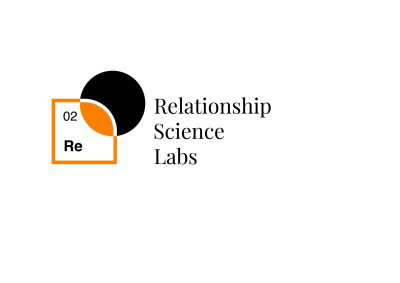Codependency is when your sense of self-worth and identity becomes dependent on your partner’s validation. It occurs when you no longer know how to define yourself and your interests without the relationship.
On the other hand, attachment is the natural human need for connection that forms during your earliest years. It usually stems from the relationship between you and your caregiver at a young age, and it continues to influence all the relationships you form for the rest of your lives.
This article will explore the differences between codependency and attachment in romantic relationships and explain how understanding these psychological concepts can help shape and strengthen human connections.
Comparing codependency and attachment
While these psychological concepts have similarities, they have distinct characteristics that can shape your relationships. Both involve emotions influencing your connections, but each impacts how you relate to others differently.
Differentiating codependent behaviors from healthy attachment
The root of codependency is when you grow a habit of being afraid of rejection or afraid of being abandoned, which causes you to be in a state of constant approval and validation-seeking from your partner.
In codependent relationships, you no longer find self-worth without your partner. You tend to put their needs above yours, which comes at the cost of your mental health and well-being. Subconsciously, your identity starts to become blurred as you give less focus to your wants and needs in comparison to the focus you give to the relationship.
On the other hand, attachment is the feeling of safety and trust within a relationship. A secure attachment stems from your relationship with your caregiver as an infant.
This early-staged relationship is powerful to the extent that it dictates the nature of relationships you will have as an adult, as it is the beginning of how you communicate your emotions and set your expectations.
Understanding the emotional dynamics of codependency and attachment
When someone is codependent, they tend to become the “martyr” to keep their relationship. For example, they start making up excuses for their partner’s ill behavior and neglect the fact that they are getting hurt by that behavior.
When this becomes a repetitive pattern, they subconsciously become more reliant on the person they’re “rescuing” for their self-image as the person keeping the relationship intact and for their sense of being needed.
On the other hand, securely attached people know how to maintain their individual character while allowing themselves to be vulnerable with their partner. This balance is an indicator that the relationship is built on a healthy basis and is the result of the natural development of a secure relationship with the caregiver from a young age.
Identifying codependency and attachment Issues
To efficiently recognize the issues of attachment and codependency, the motivations that create the behavior patterns must be understood.
Signs and red flags of codependency
Codependent behaviors originate from unresolved childhood trauma caused by dysfunctional family dynamics, including psychological abuse and childhood neglect. This eventually leads to emotional instability, developing into unhealthy behavioral patterns in romantic relationships.
Read more: Understanding Codependency and How to Overcome It
The red flags of codependency generally involve four main themes:
- Prioritizing others;
- Control-seeking behaviors that lead to conflict;
- Self-sacrifice; and
- Inability and difficulty in expressing emotions.
Recognizing different attachment styles in oneself and others
In contrast, attachment is rooted in the natural human inclination for connection, forming the basis for secure and healthy relationships. Healthy attachments involve a sense of security and trust within the relationship.
There are four primary attachment styles: secure, anxious-preoccupied, dismissive-avoidant, and fearful-avoidant. Each attachment style can influence how you interact with your partner and has a possibility of the development of codependent behaviors.
The secure attachment style is characterized by a strong sense of self-worth and an ability to form intimate connections based on trust and reciprocity. Individuals with this style tend to exhibit balanced independence and a comfortable reliance on their partners.
A fearful-avoidant individual tends to distance themselves from intimacy due to fear, whereas the dismissive-avoidant person does so because they underestimate the significance of forming relationships with others.
Individuals with an anxious attachment style often experience heightened anxiety and fear of abandonment, which can manifest in clingy or controlling behaviors. The need for reassurance drives their relationships as they seek constant validation to soothe their anxieties. It’s like an insatiable hunger, always yearning for affirmation and proof of love.
Like codependency, anxious attachment stems from negative childhood experiences that individuals carry to their adulthood. By fostering open communication, empathy, and patience, it is possible to create a secure and fulfilling bond that eases anxieties and nurtures a sense of safety.
Read more: What’s Your Attachment Style? (And Its Effects on Relationships)
Overcoming codependency and nurturing healthy attachments
In the journey to emotional well-being, there are several key steps to developing healthy attachments and decreasing codependency.
Develop self-awareness and emotional intelligence
Self-reflection is a great way to analyze your behavior and the motivation behind it. It is achieved through recognizing and understanding your emotions and needs.
- One way to develop self-awareness is by looking at yourself as an object and creating objective evaluations based on that.
- Another way is to examine past relationships to identify recurring patterns and behaviors that indicate codependency or attachment issues.
- You can also pay attention to how you react when others show independence or distance, this can provide insights into attachment-related reactions.
- Most importantly, treat yourself with kindness and understanding, acknowledging that everyone has areas of growth.
Set boundaries
Setting boundaries allows you to define your limits and priorities in relationships. A starting step is learning to say “no” when necessary and communicating assertively with your partner. Here are a few ways to set boundaries in a relationship:
- Open communication: Having an open-hearted discussion with your partner creates a safe space to express your thoughts and opinions honestly.
- Clearly define your boundaries: Being assertive about your limits with your partner doesn’t mean being hostile. It means engaging in a healthy communication method where you clearly state what makes you uncomfortable.
Read more: Creating Healthy Boundaries in a Romantic Relationship
Foster independence within relationships
Working on your personal growth is essential for maintaining a sense of self while being in a relationship. This is achieved through:
- Having personal interests, hobbies, and goals separate from the ones you share with your partner.
- Respecting your partner’s independence.
- Practicing self-compassion.
Seek therapy and support groups
Professional therapy specifically tailored to codependency and attachment issues can be highly beneficial. Examples of these types of therapy include attachment-based therapy and emotion-focused therapy. These provide a safe and supportive environment to explore and learn about new relationship skills.
Moreover, joining support groups offers the opportunity to connect with others with similar experiences with codependency and attachment, providing mutual support and encouragement.
In conclusion
It’s quite easy to intertwine with your partner when you’re in a romantic relationship. Their interests become your interests, and their hobbies become your hobbies, but when you start to support their goals to the extent that you forget that you have your own, that’s when you need to start questioning the nature of your feelings.
Take care of your mental well-being and personal development with the same level of attention as you do to your relationship. Avoid allowing the desire for attachment to result in unhealthy codependency.
If you would like to see more resources on attachment, check out the Relationships Science Labs. The lab uses the research from the Institute for Life Management Science to produce courses, certifications, podcasts, videos, and other tools. Visit the Relationship Science Labs today.
Photo by cottonbro studio on Pexels




